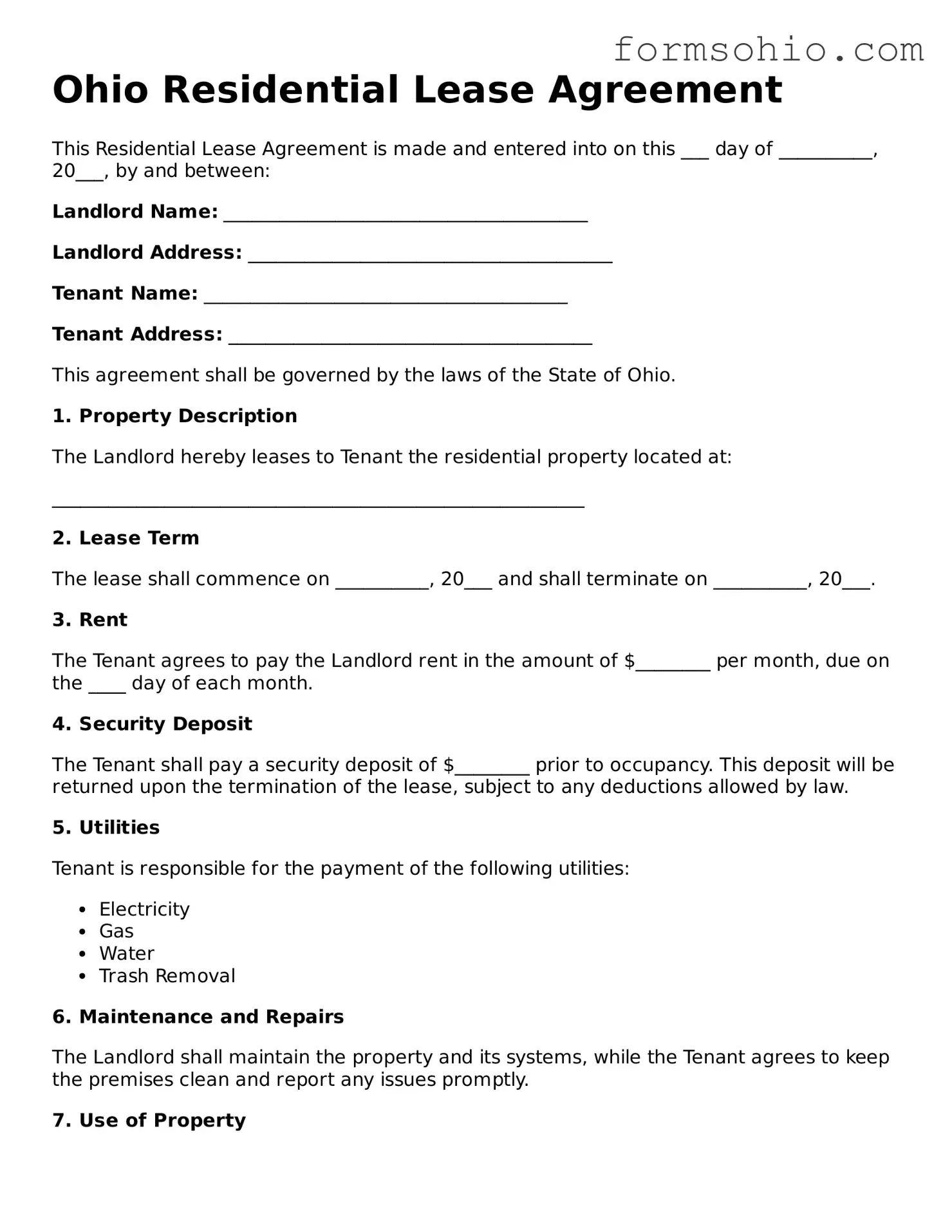Ohio Residential Lease Agreement
This Residential Lease Agreement is made and entered into on this ___ day of __________, 20___, by and between:
Landlord Name: _______________________________________
Landlord Address: _______________________________________
Tenant Name: _______________________________________
Tenant Address: _______________________________________
This agreement shall be governed by the laws of the State of Ohio.
1. Property Description
The Landlord hereby leases to Tenant the residential property located at:
_________________________________________________________
2. Lease Term
The lease shall commence on __________, 20___ and shall terminate on __________, 20___.
3. Rent
The Tenant agrees to pay the Landlord rent in the amount of $________ per month, due on the ____ day of each month.
4. Security Deposit
The Tenant shall pay a security deposit of $________ prior to occupancy. This deposit will be returned upon the termination of the lease, subject to any deductions allowed by law.
5. Utilities
Tenant is responsible for the payment of the following utilities:
- Electricity
- Gas
- Water
- Trash Removal
6. Maintenance and Repairs
The Landlord shall maintain the property and its systems, while the Tenant agrees to keep the premises clean and report any issues promptly.
7. Use of Property
The property shall be used solely for residential purposes. No illegal activities or commercial enterprises are permitted.
8. Pets
[ ] Pets are allowed. [ ] Pets are not allowed. If allowed, please describe any pet restrictions:
_________________________________________________________
9. Termination
Either party may terminate this agreement by providing written notice of at least ___ days prior to expiration of the lease term.
10. Signatures
Both parties agree to the terms laid out in this Residential Lease Agreement. By signing below, the Landlord and Tenant acknowledge their acceptance of these terms:
Landlord Signature: _____________________________ Date: ________________
Tenant Signature: ______________________________ Date: ________________
